Kashmir, India
Kashmiriyat, Kaftans, Kangri, Kahwa
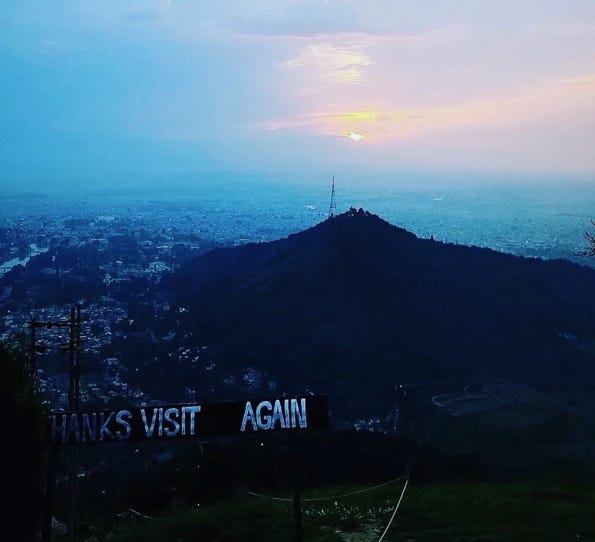
Srinagar’s homely boats
On my first day in Srinagar, I headed straight to Dal Lake, the city’s largest waterbody, and hopped onto a wooden houseboat (Shikara) for a ride. It felt less like being on a boat and more like living on the water.
The houseboat was spacious enough for me to lie down peacefully and enjoy the view of the clear waters and the blue skies above. And as I was lying down, I saw other boats gliding alongside my boat. A food boat came and anchored its boat to mine, and offered me its collection of fresh chicken tandoori and mushroom tikkas. Next a floating market boat came displaying a selection of jewelry and trinkets for me to browse and buy. There were even music boats that played soothing tunes. The gentle rocking of the boat, the cool breeze, the peaceful silence and the impeccable service for anything I could have needed made me feel like a 'floating princess’- unsure if any other experience has or can ever compare
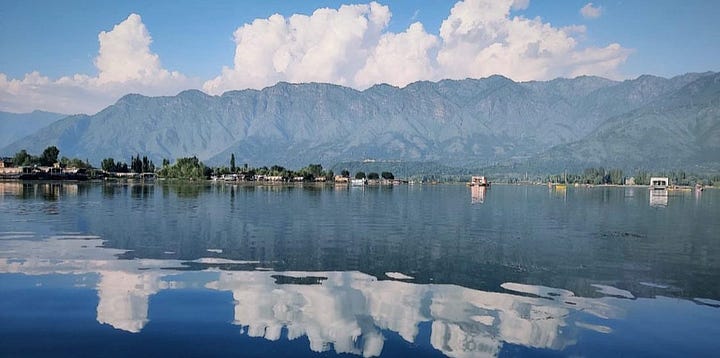
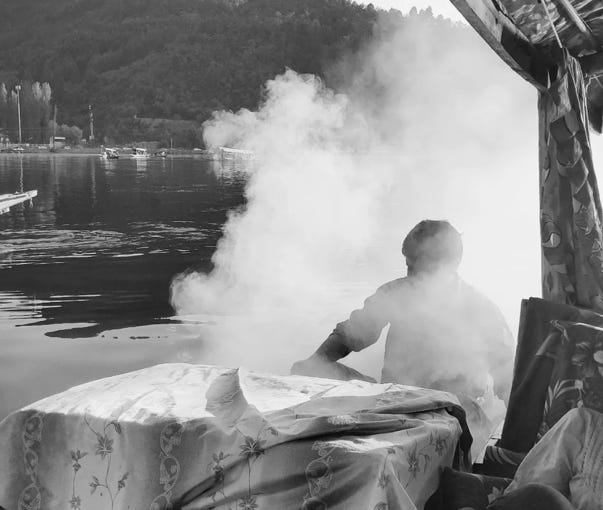
Kashmir’s tasting menu; Wazwan is a traditional multi-course Kashmiri feast. You sit around a large copper platter called a trami, and one by one, dish after dish of rich, aromatic delights start arriving—Rogan Josh, Gushtaba, Tabak Maaz, Daniwal Korma, and up to 31 other dishes (a classic Wazwan is meant to include 36 dishes in total!)
Each dish is served with saffron rice or/and sweet bread. One of the best and oldest places to try Wazwan in Srinagar is Ahdoos Restaurant, established in 1918—a place everyone I spoke to recommended, and after visiting it, now I do the same
There’s also Kahwa—the perfect way to wind down, especially in the cold winter months. This traditional Kashmiri green tea is brewed with saffron, cardamom, cinnamon, and topped with crushed almonds and walnuts, warming you from the inside out

Kaftans & Kangri. It was already well into the night, with most shops just about ready to close, when I wandered into one of the many stores on Boulevard Road in Srinagar looking for a Kashmiri Kaftan. The shopkeeper greeted me with a warm smile, showing no signs of rushing me out. For the next 30 minutes, he happily pulled out his entire collection of beautifully crafted tunics, explaining the materials—everything from light cotton kaftans perfect for summer, to thick, handwoven woolen kaftans.
He pointed out the fine, intricate Zari embroidery, a traditional Kashmiri craft where gold or silver thread is delicately woven into the fabric. He even gave me a demo of how locals wear their kaftans with a Kangri—a small earthen pot filled with hot embers, tucked under the traditional pheran to stay warm during cold months. It felt like I got a full crash course in Kashmiri dressing and a firsthand taste of Kashmiri hospitality
The “customer is king” mindset is real—and not just because tourism plays such a big role in the local economy—but because there's a genuine warmth in how people treat you
A bit of a contrast to the West where concepts of efficiency may often trump experience?. By the time I walked out, I had not just one, but two beautiful kaftans in hand—one for myself and one for my grandmother. We now happily twin in them, and every time we wear them, I am reminded of Srinagar.

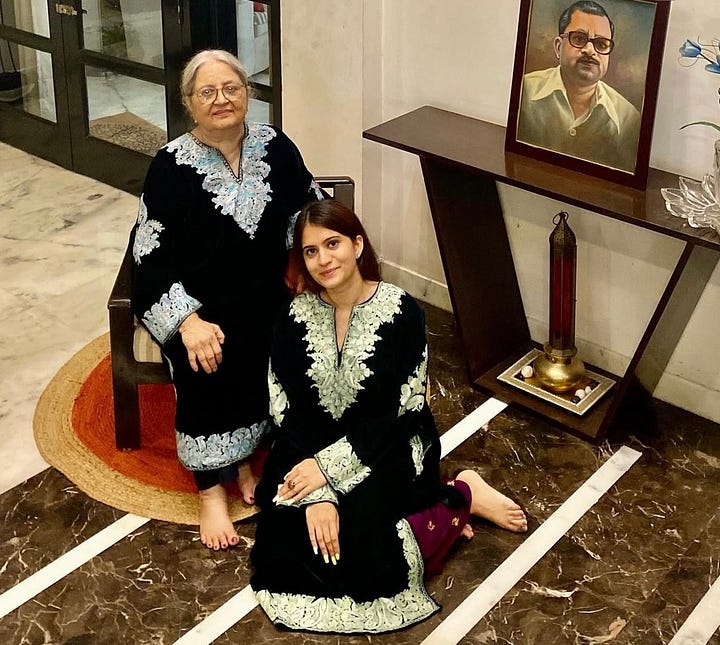
Gulmarg, outdoor and indoor. Gulmarg has something for every kind of spirit. For the adventurous, there's skiing and snowboarding on the snow-covered slopes from October to March, with some of the best powder you'll find in India. And when the snow melts, Gulmarg turns into a paradise for hiking, nature trails, and gondola rides.
But if you're more of the slow-and-steady, cozy corner kind of traveler, Gulmarg has that too. Think beautiful mountain resorts like the Khyber Himalayan Resort & Spa, where you can float in a heated indoor pool while gazing out at snow-draped pine forests
Or tuck yourself into a wooden cottage with a crackling fireplace, where the only plan is to sip hot chocolate and get lost in a good romance novel?
One of my favorite fireplace reads is always a classic Mills & Boon romance—it feels just right, wrapped in a blanket, snow gently falling outside, and a love story unfolding in my hands.


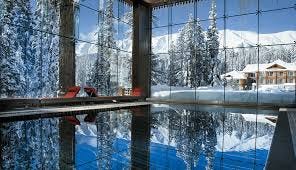
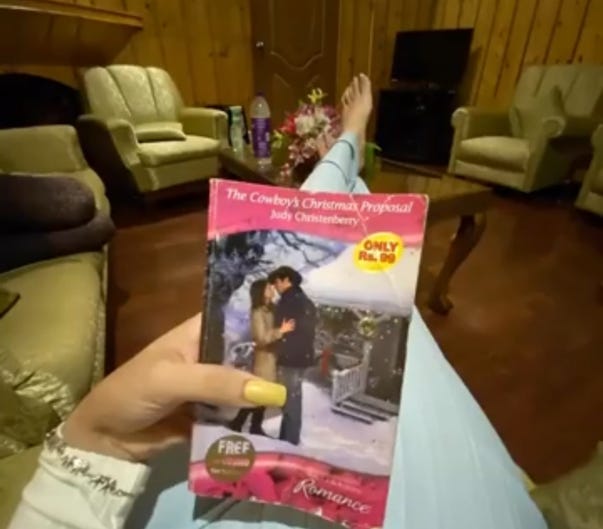
Dandilions in Pahalgam. Pahalgam, often called the Switzerland of India, more than lives up to the name. With its crystal-clear rivers like the one flowing through Betaab Valley, snow-capped peaks, and untouched natural beauty, it feels like you’ve stepped into a postcard. Much of Pahalgam isn’t accessible by car, so you end up exploring the valley on foot or horseback, far from honking horns and busy roads.
It’s just you, the mountains, and the soothing sound of the River—with the occasional interruption from a friendly shawl vendor offering handmade pashmina or a bag of Kashmiri dry fruits like almonds and cashews
On one of my walks through Baisaran Valley, I stumbled across a quiet, open field of dandelions. The tradition of blowing on a dandelion and making a wish dates back centuries. In ancient folklore, dandelions were believed to carry your thoughts, dreams, or prayers to loved ones—either on earth or in the afterlife. The belief goes: if you can blow all the seeds off in one breath, your wish will come true (or at least be heard by the universe). If a few seeds stubbornly remain, well... maybe your wish needs more time. I tried, with multiple attempts to blow all the seeds but some just inevitably remained, maybe it was my lack of lung strength, or the excessive weight my wish carried?


Kashmiriyat. Kashmiriyat represents the essence of Kashmiri identity, a deeply rooted concept built on the peaceful coexistence of diverse communities, primarily Muslims and Hindus. This spirit of harmony is evident in the everyday life of the region. Nearly 70% of the population practices Islam and Muslim horse carriers selflessly help elderly Hindu pilgrims up the mountain during one of the most revered Hindu pilgrimages, The Amarnath Yatra. The region is home to both mosques and temples, and festivals like Diwali and Eid are celebrated with equal enthusiasm by both communities.
As anyone familiar with the region’s political conflict (the long-standing India-Pakistan dispute over Kashmir) and the militant insurgencies -can attest, there is a growing concern about how these tensions could threaten the unity that Kashmiriyat embodies. The possibility of polarization between religious communities could fracture the age-old identity of harmony that Kashmir?. Curious about the state of Kashmiriyat today, I asked one of the local shawl vendors his thoughts.
With a warm smile, he simply replied, “Kashmiriyat is Kahwa. We serve it to everyone with a smile and extra sugar,”—a metaphor for the region’s unparalleled hospitality and welcoming spirit
Closing reflection: A heartwarming holiday in a cold place with colder history. May not be a quick stop from anywhere in India to Kashmir so budget in 3-4 days, and plan for relaxation, adventure, sport, shopping or all of them.
